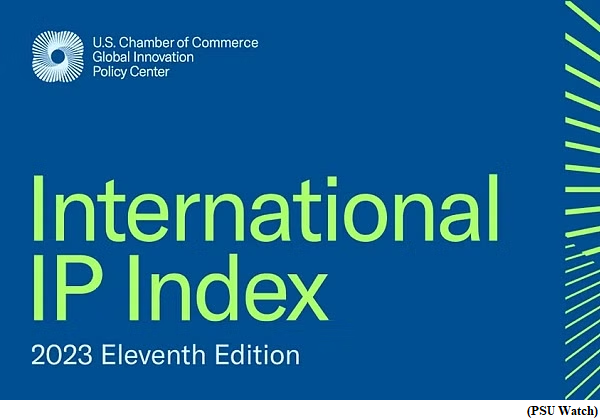Medicinal plant commonly called Borthekera in Assamese found to have cardioprotective potential (GS Paper 2, Health)

Why in news?
- Garcinia pedunculata, a medicinal plant commonly called 'Borthekera' in the Assamese language, traditionally forbidden for raw consumption, has been found to protect from heart diseases.
Properties:
- Administration of the dried pulp of the ripe fruit of the medicinal plant reduced cardiac hypertrophy indicators and oxidative stress and heart inflammation brought on by ISO.
- The sun-dried slices of the ripe fruit are used for culinary and medicinal purposes and are known to have therapeutic properties like anti-inflammatory, anthelmintic, antibacterial, antifungal, antidiabetic, hypolipidemic, nephroprotective, and even neuroprotective activity.
- With scientific interventions seeking proof of these claims, multiple studies have been reported that G. pedunculata is a rich source of antioxidants. However, the cardioprotective potential has yet to be explored earlier.
How the property was explored?
- Scientists of Institute of Advanced Study in Science and Technology (IASST), explored this medicinal plant's potential to prevent heart diseases. A double dosage of bioactive chloroform fraction (GC) of the herb was fed to Wistar rats at 24-hour intervals (85mg/kg body weight (BW) for 28 days.
- To assess the therapeutic effect, this was followed by injection of isoproterenol following the isoproterenol-induced myocardial infarction model.
- All the animals were analyzed, revealing that the disease group had significant ST wave (ST is the segment representing the interval between depolarization and repolarization of the heart's ventricles) elevation, indicating myocardial infarction, which was normalized with Atenolol and GC treatment.
- Cardiac hypertrophy, cardiac troponin I, tissue lipid peroxidation, and serum inflammatory markers were all significantly elevated in the disease group, which were maintained at near-normal levels in the GC pretreated groups. The endogenous antioxidants were also revamped in the GC-treated groups.
Therapeutic potential:
- The chemical characterization of the chloroform fraction revealed the presence of active phytocompounds like hydroxycitric acid, hydroxycitric acid lactone, and parvifoliquinone along with compounds like GB-1a, Garcinone A, 9-Hydroxycalabaxanthone, Chlorogenic acid, and Garcinol as well.
- The therapeutic effects reported in this study are likely due to the presence of all these compounds.
- All these results strongly infer the good cardioprotective potential of G. pedunculata fruit abundantly available in Northeast India.
India ranks 42 in 55 countries on International IP Index
(GS Paper 3, Economy)
Why in news?
- India ranks 42nd among 55 leading global economies on the International IP Index released by the US Chambers of Commerce.
- As India's size and economic influence grows on the world stage, India is ripe to become a leader for emerging markets seeking to transform their economy through IP-driven innovation.

About International IP Index:
- The annual International IP Index evaluates the protection of IP rights in 55 of the world’s leading economies, together representing around 90% of global GDP.
- The report covers everything from patent and copyright laws to the ability to monetise IP assets and the ratification of international agreements.
Achievements:
- According to the report, India has maintained continued strong efforts in copyright piracy through the issuing of dynamic injunction orders.
- India not only has generous R&D and IP-based tax incentives, but also has a strong awareness-raising efforts regarding the negative impact of piracy and counterfeiting.
- It is a global leader on targeted administrative incentives for the creation and use of IP assets for SMEs.
Challenges:
- India has taken steps to improve enforcement against copyright-infringing content and provides a best-in-class framework to promote better understanding and utilisation of IP assets.
- However, addressing long-standing gaps in its IP framework will be critical to India's ability to create a new model for the region and India's continued economic growth.
- However, the 2021 dissolution of the Intellectual Property Appellate Board, combined with the long standing issue of an under-resourced and overstretched judiciary, raises serious concerns about rights holders' ability to enforce their IP rights in India and to resolve IP-related disputes.
Significance of the Index:
- The report shows a torrent of proposals, both domestic and international are threatening to erode intellectual property (IP) rights.
- By analysing the IP landscape in global markets, the index aims to help nations navigate toward a brighter economic future marked by greater innovation, creativity, and competitiveness.
About US Chamber of Commerce:
- It is the world’s largest business federation representing the interests of more than 3 million businesses of all sizes, sectors, and regions, as well as state and local chambers and industry associations.
- The group was founded in April 1912 out of local chambers of commerce at the urging of President William Howard Taft and his Secretary of Commerce and Labour Charles Nagel.
Indian scientists bombard fighter jet with electric current to understand lightning strikes in air
(GS Paper 3, Defence)
Why in news?
- Scientists at the India Institute of Science in Bengaluru have developed a new model to simulate how lightning strikes aircraft to better understand protective measures against the natural phenomenon.

Impact of Lightning strikes:
- Lightning strikes can damage the aircraft surface, lead to temporary disruptions in electrical and electronic systems or even cause permanent damage, and in extreme cases could lead to explosions or even fatal crashes.
- It is estimated that on average, a commercial aircraft gets struck by lightning once in every 1000 flight hours, which is approximately equivalent to once in a year.
How the experiment was conducted?
- Scientists carried out a first-of-its-kind experiment on a small military aircraft by injecting it with enormous amounts of current and by collecting electric field data from inside the craft.
- They developed a model that can be applied to two different aircraft geometries: a DC10 passenger aircraft and the SDM fighter aircraft model.
- They worked on the computation of the electric field around the aircraft and suitable modeling of the electrical discharges.
Outcome:
- They were able to obtain estimates of the minimum ambient electric field required for the initiation of lightning leader discharges from the aircraft. These values are in good agreement with measured data from instrumented aircraft flown through thunderstorms.
- The model takes into account the role of atmospheric conditions such as humidity and air pressure and showed that the aircraft at higher altitudes had a greater affinity for lightning strikes.
- They have been studying lightning protection for the past few years. They have analysed the effectiveness of lightning rods in safeguarding tall buildings in a thunderstorm. They have developed unique models that have addressed several long-standing issues of lightning current evolution.
What’s next?
- The model and the data obtained from it, states that the first step toward designing suitable protective measures against lightning is identifying the attachment locations.
- They are trying to understand the peak value of the lightning strike current for aircraft-initiated lightning. Secondly, what could be the local changes around the aircraft during the lightning strike evolution?
- In addition, they are investigating disruptions to the internal electrical equipment when struck by lightning.
ISRO study shows how India coastline changed in 10 yrs
(GS Paper 3, Environment)
Why in news?
- India lost over 3,680 hectares of land due to coastal erosion in the course of 10 years, with West Bengal and Gujarat bearing the maximum brunt, according to a study by the Indian Space Research Organisation (ISRO).

Details:
- The research, conducted by ISRO’s Space Applications Centre, Ahmedabad, on comprehensive data available between 2004-06 and 2014-16, shows that 15 per cent of India’s coastline, amounting to nearly 1,144 km is undergoing erosion. Meanwhile, 14 per cent (1,084 km) of the Indian shoreline is accreting.
- India gained 4,042 hectares of coastal area between 2004-06 and 2014-16. Although there is a net gain in the total coastal area (due to settlement of sediment/sand), the stretch under erosion is greater than the accreting shoreline.
Coastal Erosion:
- The world’s shorelines are constantly changing due to natural processes such as coastal erosion and accretion, as well as human activities that affect sediment transport.
- However, the anticipated sea level rise, increased wave activity, and projected increase in the frequency and intensity of tropical cyclones due to climate change are expected to cause more rapid and severe shoreline changes in the near future.
- Coastal erosion means acres of land are disappearing. This can lead to a habitat reduction for local fauna and flora, and make people living in coastal areas vulnerable, their land disappears, and they are closer to the sea.
Accretion:
- Accretion is the process of coastal sediment returning to the visible portion of a beach or foreshore after a submersion event. A sustainable beach or foreshore often goes through a cycle of submersion during rough weather and accretion during calmer periods.
- Accretion can be beneficial in some cases, as there is an increase in the land area. But it can harm marine life, like sea creatures suddenly finding their waters getting shallower, or turtle habitats moving away from the shoreline.
Mapping HTA:
- The researchers considered the High Tide Line (HTL) as the coastline. Using images from the LISS-IV sensor aboard ISRO’s Resourcesat-1 and 2 satellites, they were able to map the HTL of the Indian coastal states with a spatial resolution of 5.8 m corresponding to 2004-06 and 2014-16 time frames.
- For different states, the HTL is represented by different landscape indicators, such as mangroves, cliffs, seawalls, or permanent vegetation lines. The team used a digitisation technique to map out the shorelines for each of the states.
Key Findings:
- They found that the Andaman and Nicobar Islands have the longest eroding coastline (231 km) and the longest accreting shoreline (256 km). Erosion is lowest in Lakshadweep Islands (12 km), and the lowest length of the accreting shoreline is in Goa (7 km).
- The percentage of eroding shoreline is highest for West Bengal (36 per cent), followed by Odisha (32 per cent), Kerala (23 per cent) and Andhra Pradesh (23 per cent). The remaining maritime states have less than 20 per cent of eroding shoreline, with Lakshadweep recording the minimum (8 per cent).
- Andhra has the highest percentage of accreting coastline (26 per cent), followed by Tamil Nadu, Odisha and West Bengal (22 per cent each), and Kerala (21 per cent).
- The percentage of stable shoreline is highest for Gujarat (87 per cent), followed by Lakshadweep (82 per cent). The figure is 80 per cent for Maharashtra and Goa.
Shoreline changes higher on eastern coast:
- Shoreline change is higher along the eastern coast of the Indian peninsula than the western coast.
- West Bengal, Gujarat, Odisha, and Goa have suffered a net loss of coastal area due to erosion in the course of 10 years. The loss is the largest for West Bengal (252 hectares).
- Meanwhile, Tamil Nadu, Maharashtra, Karnataka, Kerala, Andhra Pradesh, and Lakshadweep have gained coastal land. The gain is the largest for Andaman and Nicobar Islands (524 hectares).
Significance:
- As coastal erosion is a serious threat to both the ecology and economy of the country, the shoreline change inventory is the primary information required for planning coastal development activities.
- Keeping track of shoreline changes helps in planning measures to carry out sustainable development activities along the coastal region.





